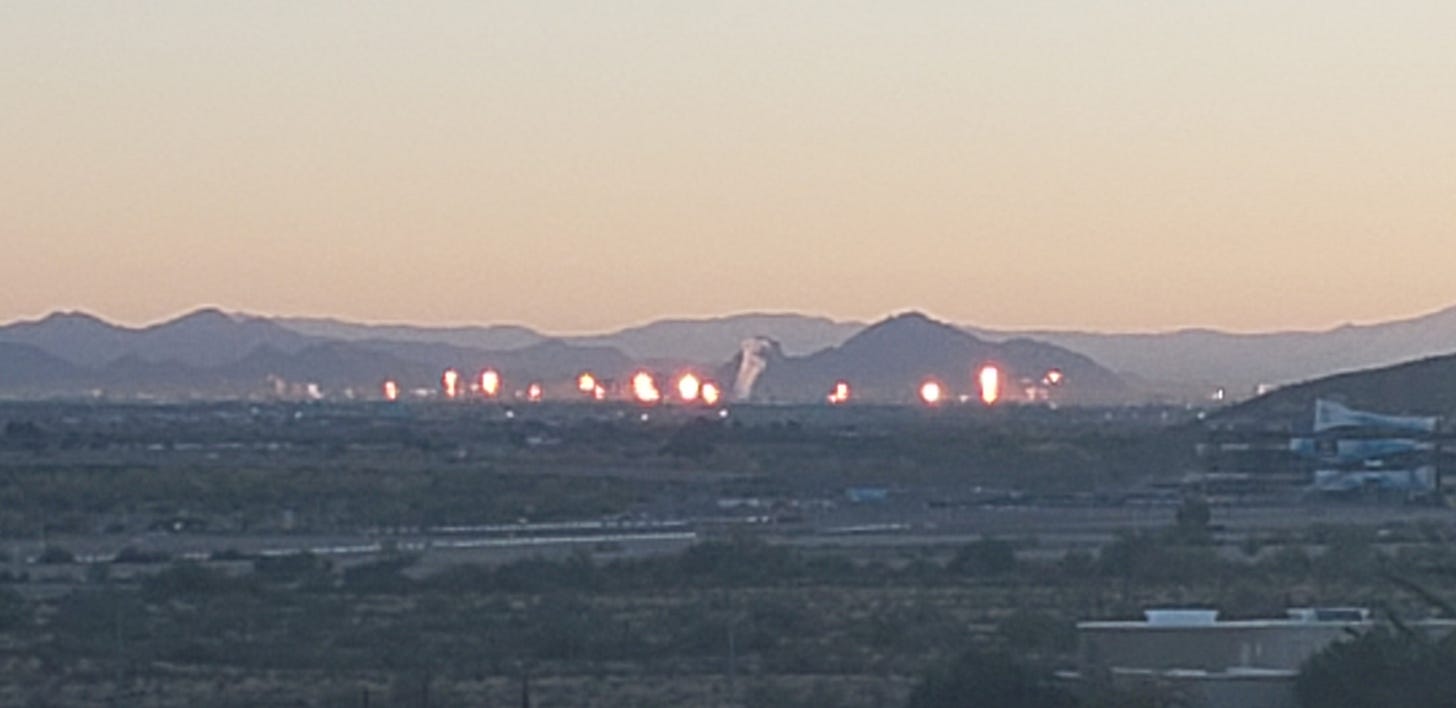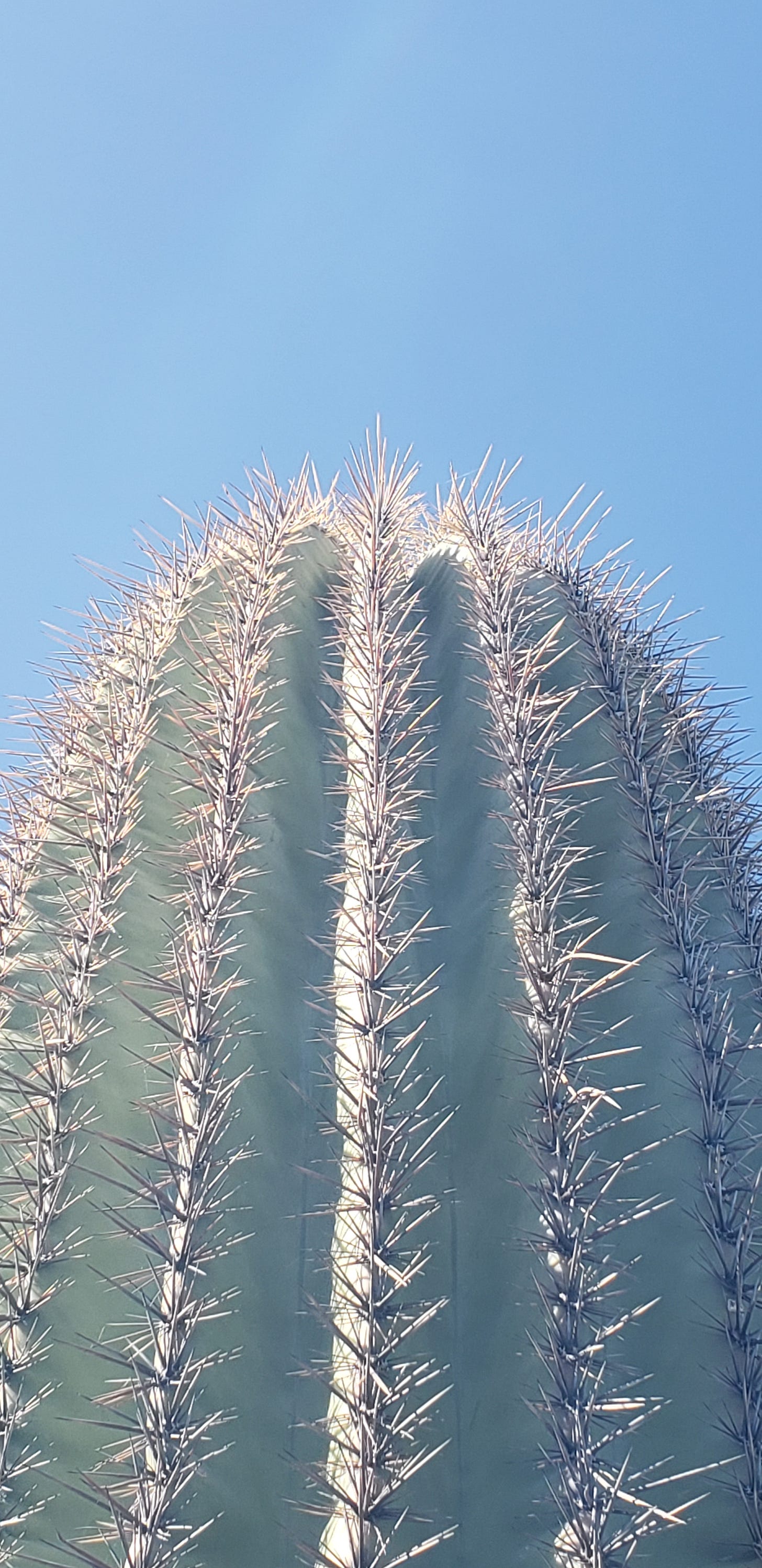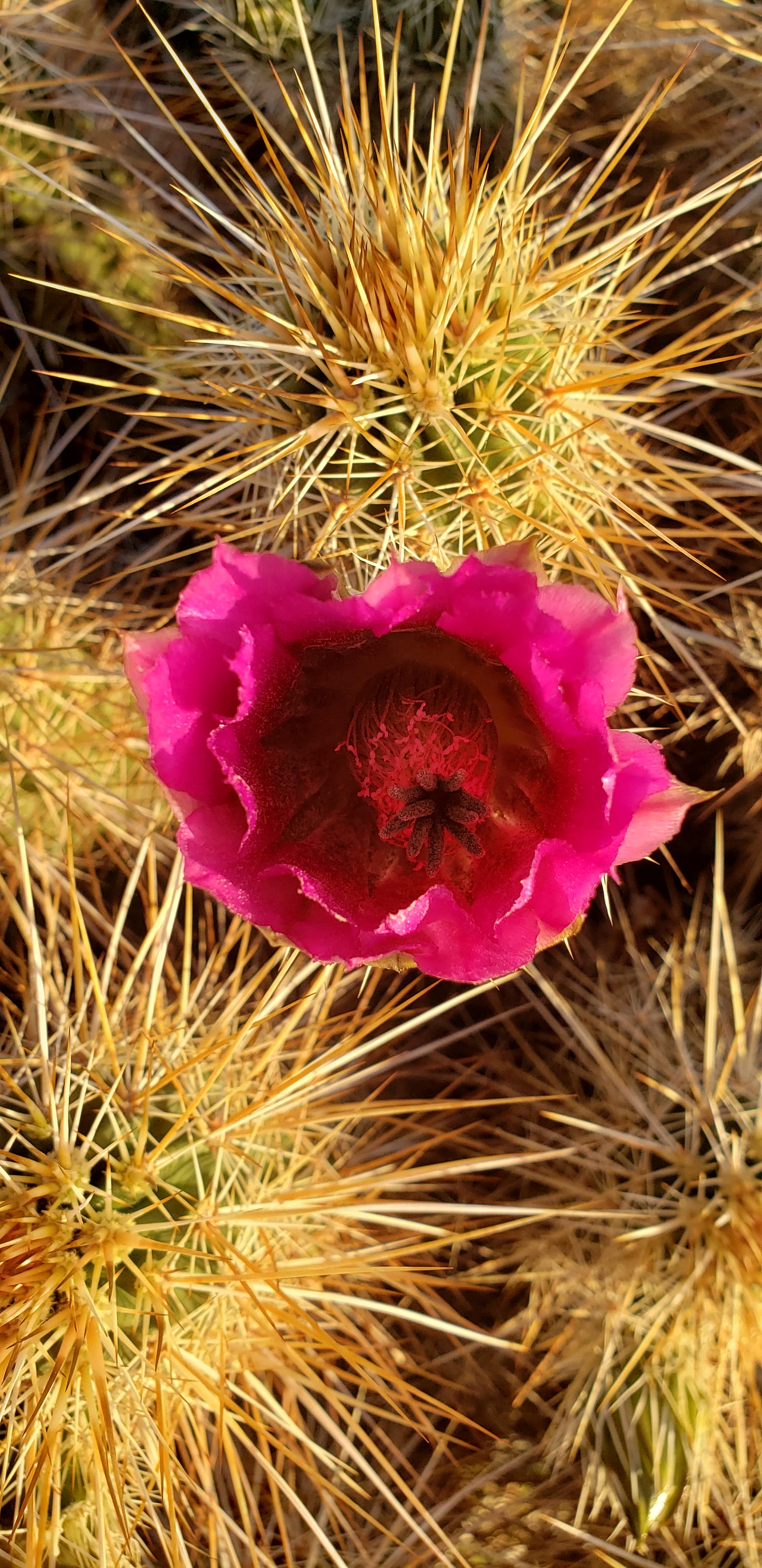Out of the mouth of a babe of a man contemplating the troubles of the world:
“Hard times make strong people.” Truth.
“Strong people make easy times.” Hopefully.
“Easy times make weak people.” Umm, but we’re smarter, right?
“Weak people make hard times. … Hard times make strong people.”
Ahh … a pattern.
The spring bloom in the Sonoran desert reminds me of this pattern. These days, times are always hard for desert dwellers, humans, flora & fauna alike. If water is the lifeblood of our planet, the essential flow seems to trickle perpetually on the low end of just enough. We have a frontline experience of the immediate effects of nature’s climate change!
Overlooking the Phoenix Valley from my backyard mountain, I can see the indention the enormous glacier made where there is now a sprawling city. As that glacier receded inch-by-inch, it etched the riverbeds of the Salt, Gila, Agua Fria, San Pedro and Santa Cruz rivers depositing glacial gravel on terraces in between.
As temperatures continued to warm, abundant flows of water in those rivers readily fed many varied forms of flora and fauna. The discovery of woolly mammoth bones embedded with projectile points believed to be made by Paleo-Indians 11,000 to 12,000 years ago in (now) southern Arizona suggests lush vegetation and ample water sources for these massive creatures and their hunters to survive.
Then in a geological “flash,” everything quickly froze and mass extinction ensued. This period, called the Younger Dryas, lasted about 1100-1300 years during which life was held on the brink. Climate changed again, ice melted, the “great flood” happened, and life restarted. Over the following centuries, humans began to show up anywhere there was dry land but stayed close to these veins of lifeblood learning how to manage the flow to grow crops and families and lifestyles.
The Hohokam people of the American Southwest lived along the banks of the web of rivers in what is now central and southeastern Arizona. These native people were engineering geniuses and master irrigationists! There is evidence of people irrigating crops in the Sonoran “desert” is as early as 1500 BCE, but no other ancient culture in the North American continent was better at developing complex and sophisticated irrigation and agriculture systems than the Hohokam. They planned, organized, dug, built, re-routed and maintained a massive grid of canals, headgates, branches, tributaries, capillaries that fed their fields of corn, beans, squash and cotton while also sustaining the flora and fauna for foraging and hunting for hundreds of years! Except for occasional fluctuations of high and low flow rates in the rivers and the aggravating (and increasingly deadly) attacks by the neighboring Apaches, life for the Hohokam people was hard but good.
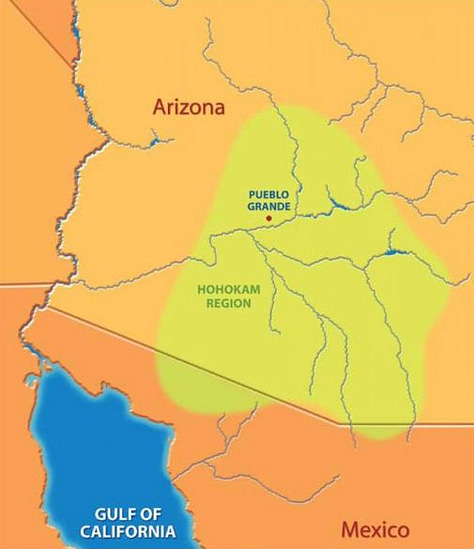

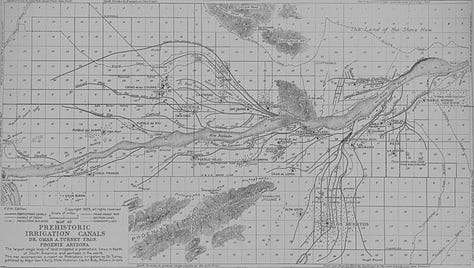
Link: Hohokam Ancestral History
So where did all the water go? Is “desert” even a “natural” landscape?
While today’s Sonoran scorched earth environment may, in part, be a result of modern water control systems (dams, treatment facilities, etc.), rampant corporate agricultural and developmental projects, and shady water rights contracts (especially with the native people), the climate was changing long before any of these factors entered the equation.
There is evidence that before 2500 BCE, the climate was even drier here than it is now. Slowly but surely, climate changed and more water became available. Populations of all species grew eventually making large-scale agriculture and settlements possible for hundreds of years. Climate slowly changed again and around 1200 CE widespread drought affected geographic regions at different rates causing populations to diminish and migrate to other areas. “Suddenly” around 1450 everyone in the Hohokam and surrounding cultural regions “vanished” or “abandoned” their settlements and, according to the tidy explanation on the website of the local regional park near the Gila River, nothing else happened until the Spanish (namely, Father Kino, a Jesuit priest) came around in the late 1600’s.
But, wait! A quiet time when “nothing” happened? Probably not … because patterns happen. Using radiocarbon dating on roughly 150 samples of dead plant material, scientists have identified two clusters of “kill dates” between 1275 and 1300 CE with another sharp spike right about (drum roll) … 1450! This research indicates that these plants were (relatively) quickly engulfed in ice and frozen with roots intact.
Enter the “Little Ice Age.” This “gnashing age of snow and ice” was well documented in art and history, especially in Europe where pamphlets advertised venturing out to “Freezeland” during the “freeze fairs” held on the frequently frozen River Thames, river taxi men lost their livelihoods, and preachers hailed that the commonality of unnatural sights and extreme poverty were reasons for repentance in farming communities where crops failed while women of low social status were accused and blamed of witchcraft when no other explanation sufficed for the breakdown of society as they had known it. (What might have triggered the Little Ice Age?)
Yet again, reliably, it got warmer … and around 1800, the ice melted very quickly and there was water, water everywhere (mud-floods, anyone?). With “better management,” humans, animals and plants have again populated and flourished across the land for hundreds of years.
Only until the recent advent of widespread media infiltration, ALL of these massive, literally life-threatening climate changes happened without giant resource-sucking industries or gas-guzzling cars or your shameful plastic bags and straws or “the evil white man” who is obviously to blame for everything.
And now it’s dry again.
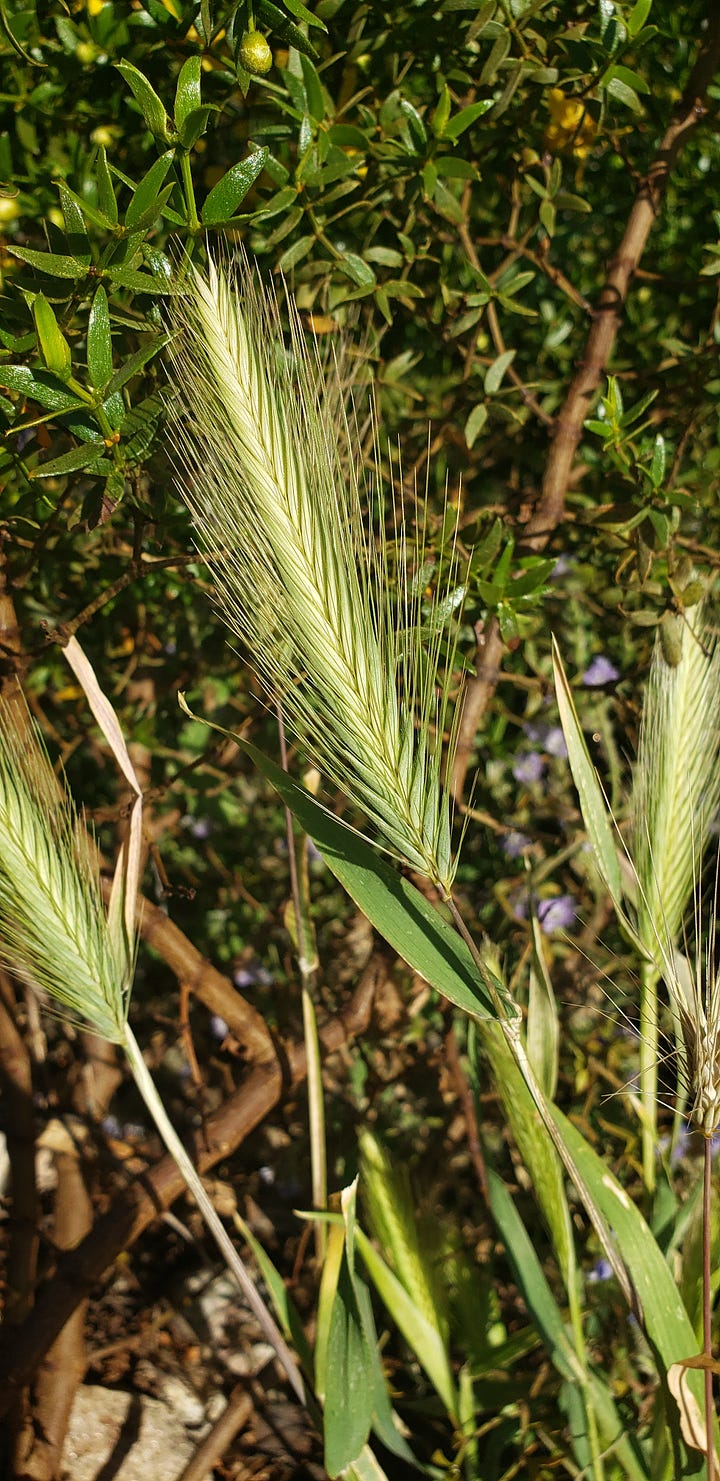
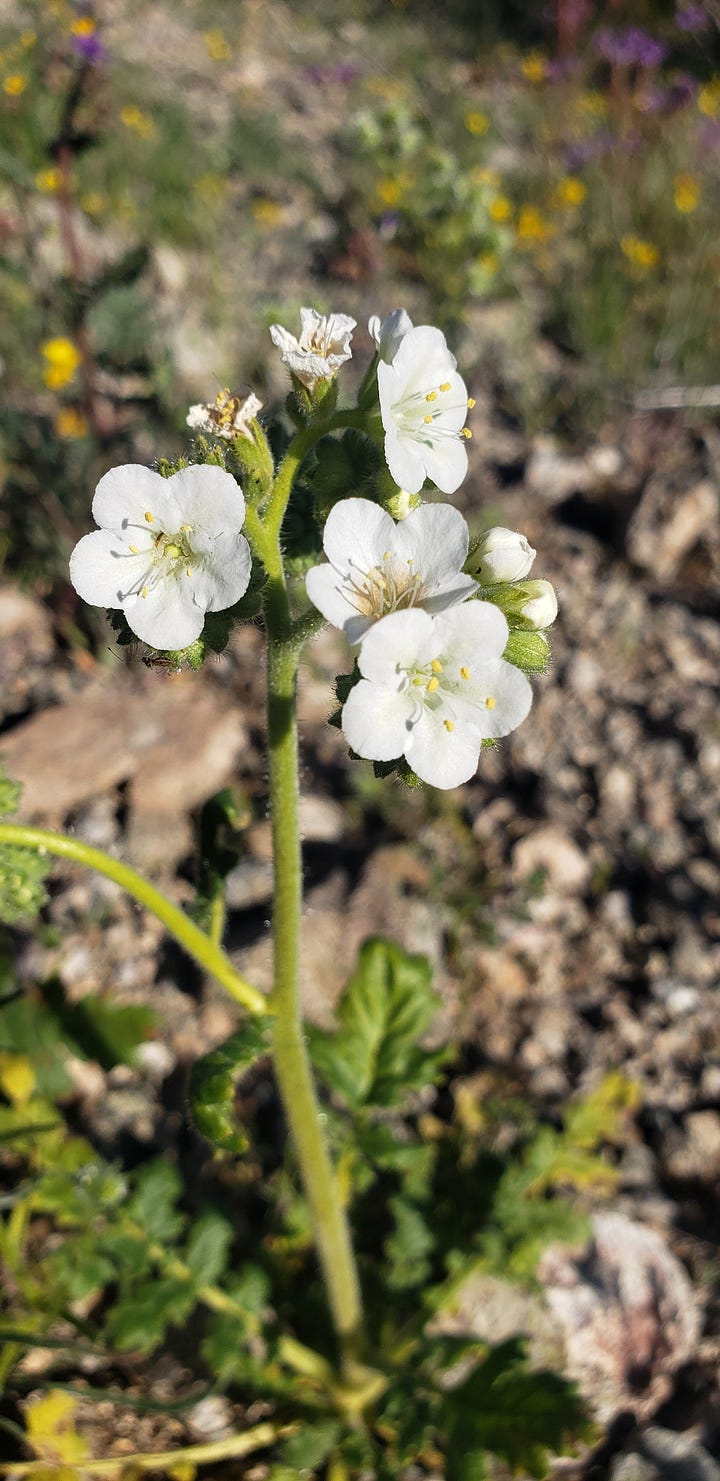
Still somehow, through a magnificent communication between Earth & Sky … water happens. When the desert blooms, colors easily come alive everywhere there was once beige! I see this elusive sacred water in the grasses and hardy dandelions and nettles that emerge from sand and dust. I see it in the Ironwood trees and the Mesquite, Acacia and Palo verdes that reliably produce leaves and beans every spring.


This lifeblood is in the Desert sage and California poppies that beam rays of yellow the “dry” riverbeds. It’s in the gray branches of the one Chapparal plant that weaves underground like a mycelium network popping its bushes up across the landscape, suddenly spraying abundant delicate yellow flowers and oily leaves as the bees happily buzz. It’s in the prickly cacti that give showy, thick, succulent flowers and in the pearlescent crown of blooms atop the Saguaro that develop into syrupy sweet fruits which must be carefully and ingeniously gathered before the tricky birds scarf them up.

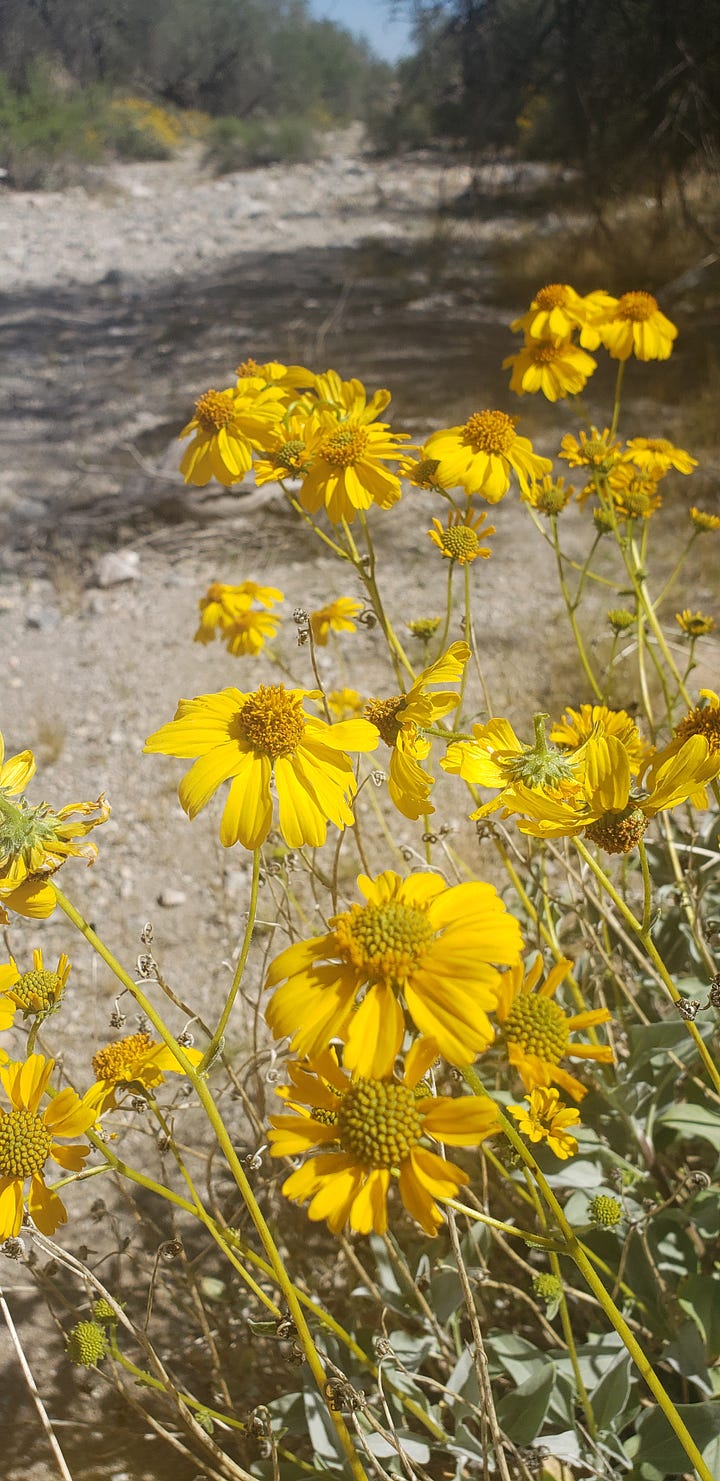
This is their time!! The season in which they get to show us that they’re made for this and there is always enough lifeblood to sustain what’s meant to be here! Even if it gets really dry and brittle and crackly and stifling hot and it seems the necessary lifeblood will never come, it always comes. In fact, it’s always here.


This is similar to humans, especially in the leaden density of our times. No one gets out of the Kali Yuga unhurt, unruffled, unpricked. We’ve all had to get tough and strong in our own ways to make it through very hard times. And just like our desert plants, we protect the precious creations we work lifetimes to produce. Some of us need very thick skins, some need stabby spines the size of knitting needles and some use tiny little invisible spines about which, if not careful, you will absolutely know more than you want to.
The mighty Saguaro is an example of one who seems to have the desert survival system down pat:
· Take a long time to grow a strong deep root – be absolutely certain you’re in for the long haul.
· Only when you’re ready, grow slowly; ensuring that deep root is tapped into a vein of lifeblood and operating sufficiently. Be ready to seek, grow & adjust as needed.
· Don’t be in a rush to grow arms; in fact, wait 75 years or so.
· Thicken your skin to protect your nutrients and lifeblood and see it as your duty to poke harshly if threatened.
· Strengthen your bones to withstand the cycles of monsoons and drought that will continue for the decades of your life …
· Only then can you provide sanctuary to your feathered friends who aren’t offended by your prickliness or strength; who are made for and appreciate your fortitude and protection. Only then can you be the leading star in a world of strong forces and don your crown of beautiful blossoms every spring to show the sweet fruit of your diligent cooperation with Earth and Sky!
Harsh environments and intense climate changes - i.e., hard times – make for very strong plants. These strong plants use every bit of their energy and lifeblood to produce something beautiful, something of ease amid the aridity and prickliness. Too much water – too much “ease” – wouldn’t necessarily contribute more benefit to the plants that are strengthened by the laborious search for lifeblood. Sure, other populations would grow but this strong, sturdy desert flora was made for this! To be able to put on this wonderful show every year, they must withstand monsoons, drought and seeming death to be rebloomed … to produce immense, vibrant life from harsh prickly places.





